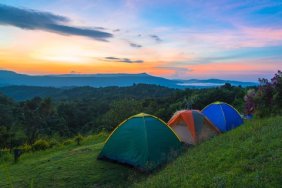 Backpacks are one of the most crucial pieces of gear for an outdoorsman. However, even though they’re made to carry all your backcountry essentials, it can be easy to go overboard. Go too small and you run out of room. Go too big and you risk stuffing your pack with unnecessary gear, which means extra weight and slower going. For more inexperienced customers, cubic inches and liters can be a bit confusing. Today, though, we’ll take a look at some guidelines to help you choose the appropriate backpack capacity for your needs.
Backpacks are one of the most crucial pieces of gear for an outdoorsman. However, even though they’re made to carry all your backcountry essentials, it can be easy to go overboard. Go too small and you run out of room. Go too big and you risk stuffing your pack with unnecessary gear, which means extra weight and slower going. For more inexperienced customers, cubic inches and liters can be a bit confusing. Today, though, we’ll take a look at some guidelines to help you choose the appropriate backpack capacity for your needs.
There are two things you’ll want to consider when looking at backpack capacity: how long is your typical backpacking trip, and which season do you usually prefer? Obviously, there will be times when you’ll travel out of season or for longer than usual, but you should have a general idea of whether you’re more of a summer weekend backpacker, or an extreme, year-round backcountry adventurer. Essentially, you want just the right size backpack to hold whatever you need. When in doubt, I always advise going up a size in terms of capacity; it’s only a little more weight for quite a bit more room.
Let’s explore some of the ideal sizes, based on trip duration and season. For day hikes, you won’t need to carry much, but it will still be a good idea to keep some extra gear—snacks, jacket, socks (especially in winter). During the snowy, cold months you’ll probably want a daypack in between 2500 and 3500 cubic inches (40-55 liters). During the Spring and Fall, you can downsize a little to between 2500 and 2000 cubic inches (35-30 liters), and then 1500-2000 cubic inches (25-25 liters) in the Summer.
For longer trips—one to three/four nights—you’ll obviously need to go a little bigger. During the Winter, you’ll want a pack between 4000 and 5500 cubic inches (65-90 liters). One in the 3500 – 4500 range (55-70 liters) is great for the Spring and Fall, whereas a 2500 to 3500 pack will do fine in the Summer (40 – 50 liters).
Finally, if you’re embarking on a backcountry trip that will last five nights or longer, a big pack is the way to go. Generally, you’ll want one over 5000 cubic inches (80 – 90 liters) during the Spring, Fall, and Winter. In the Summer, you can probably get away with something in the 4000 – 5000 range (65 – 80 liters).
Personal needs will vary, of course. For example, some hikers eat or wear more when it’s colder, while others don’t. Obviously, you’ll have your own individual needs, but the guidelines listed above are a solid jumping off point when considering what size pack to go with. Keep them in mind if you’re in the market for a new pack.








